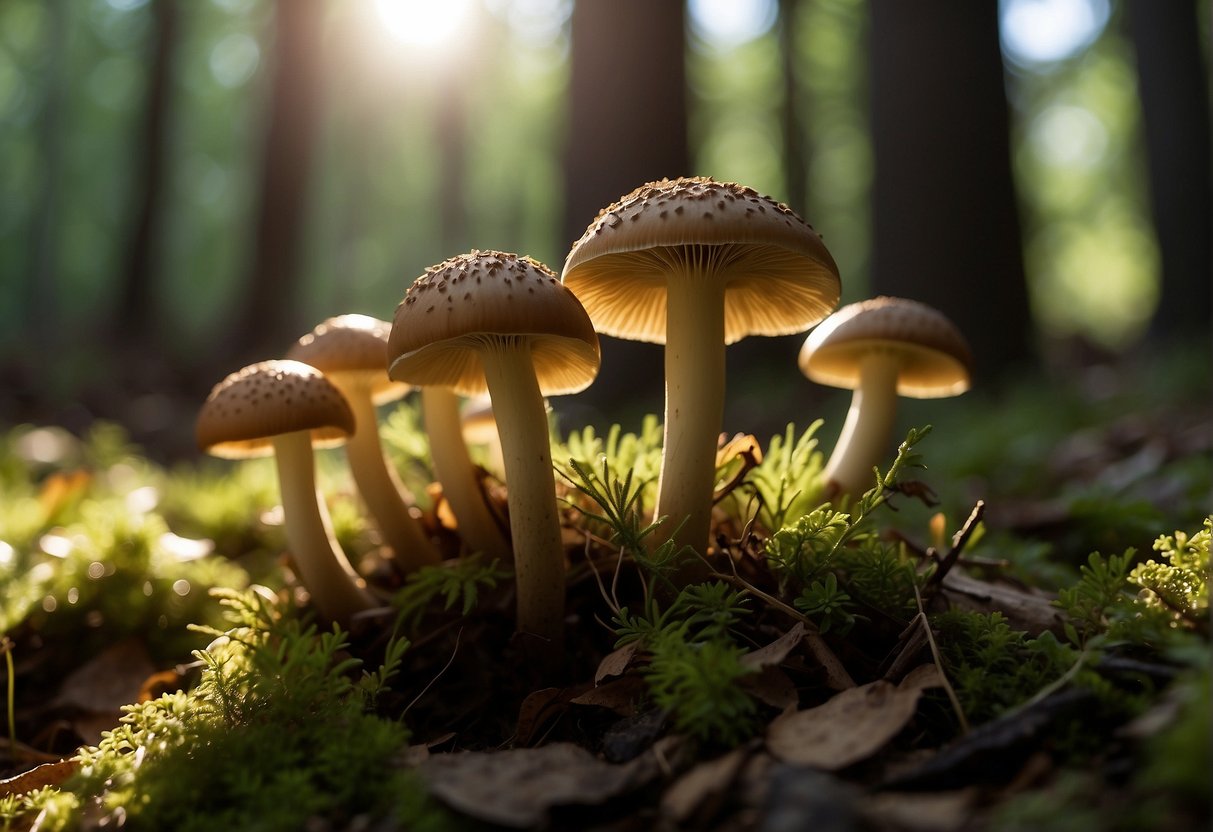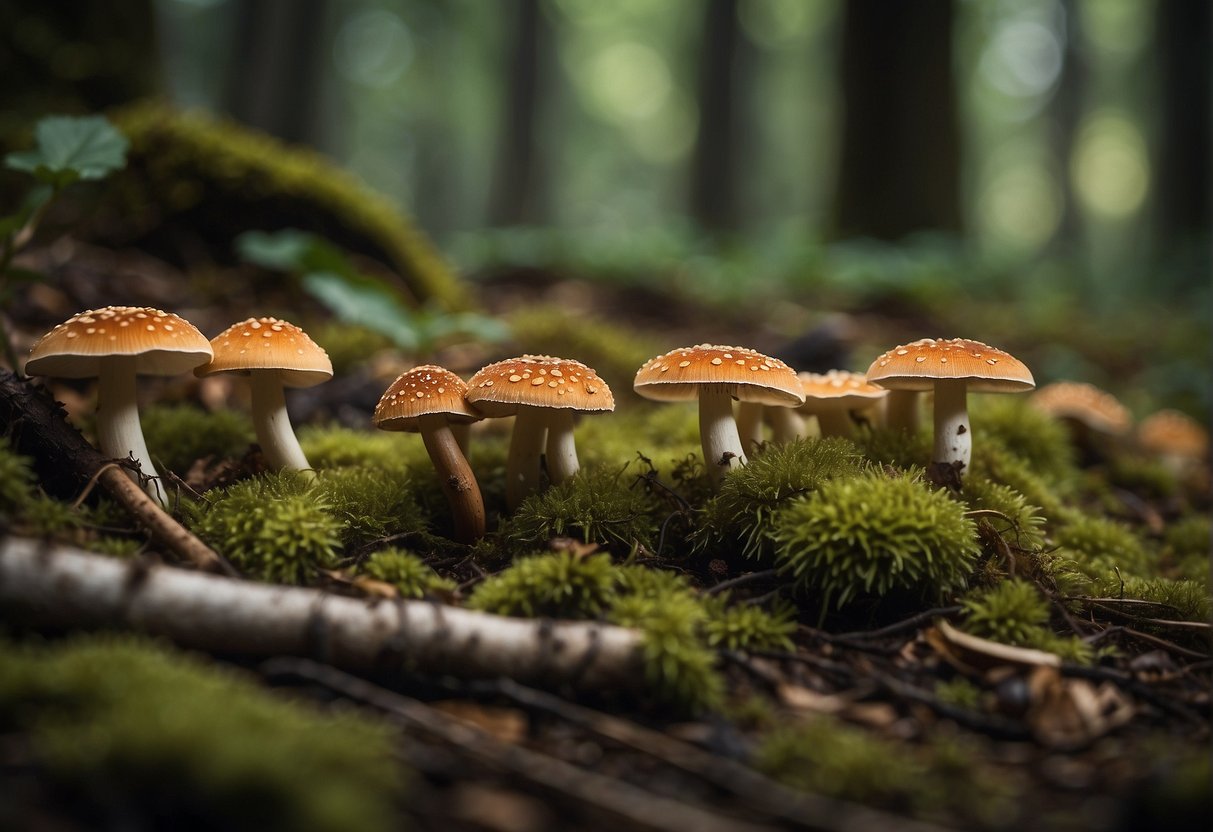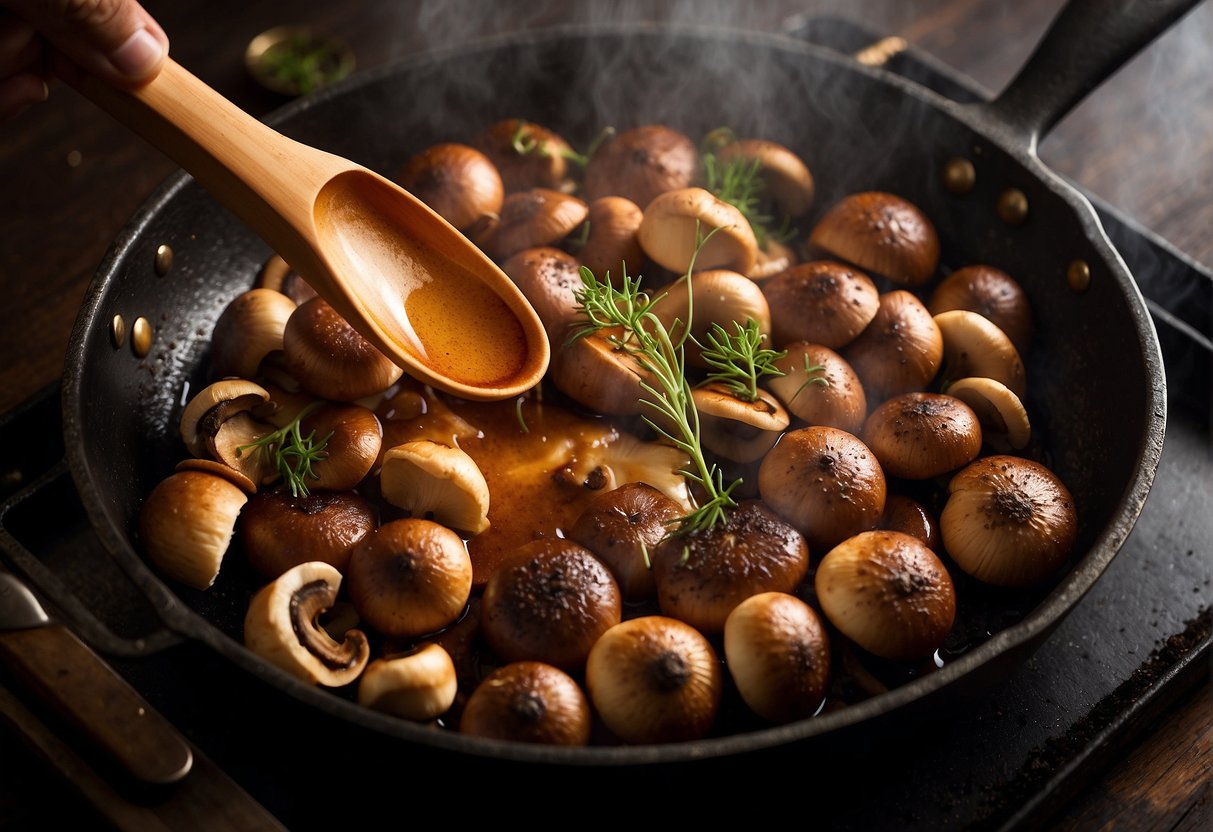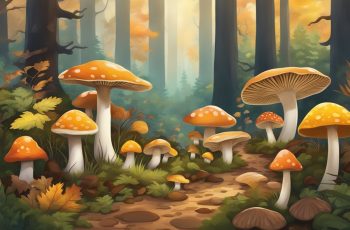As an enthusiast of the great outdoors and the rich world of foraging, you know the thrill of coming across a patch of mushrooms, especially the prized porcini, also known as the king bolete. Identifying porcini mushrooms can be a rewarding experience, offering both a delectable ingredient for your rustic recipes and a connection to nature. With their distinctive appearance—a thick stem and a cap that resembles a slightly greasy bun ranging from yellow-brown to reddish brown—the porcini is a sought-after find for any forager.

However, the woods are also home to porcini look-alikes, some harmless and others not so much. It’s crucial to distinguish between the true porcini and its impostors to ensure your wild harvested meal is both delicious and safe. Knowing the subtle differences, such as the color of the spore mass or the bitterness of unpalatable varieties, is key. Your ability to differentiate them is a valuable skill that turns a simple hike through the woods into a successful foray.
Before your next excursion, take a moment to brush up on the identifying features of the king bolete. Notice how the spore-producing surface beneath the cap can help you tell the difference, and why checking for certain characteristics can prevent an unfortunate case of mushroom poisoning. With this knowledge in your forager’s toolkit, you’re ready to distinguish the true porcini mushrooms from their deceivingly similar counterparts. Your expertise not only heightens your outdoor experience but also protects your well-being, proving once again that knowledge is just as important as a good pair of boots on the trail.
The Porcini Identification Guide
When venturing into the forest for mushroom hunting, knowing how to properly identify porcini mushrooms, scientifically known as Boletus edulis, is crucial. This guide will help you distinguish the prized porcini from its many look-alikes with confidence.
Identifying Characteristics
Cap: The cap of a porcini is typically large, resembling a slightly greasy bun, and varies in color from yellow-brown to reddish-brown. Mature caps can measure up to 30cm across, offering a substantial harvest.
Stem: Look for a stem that matches the size of the cap and bears the same heft. Unlike gilled mushrooms, porcini have a distinctive white to yellow pore surface underneath the cap.
Texture and Aroma: Porcini mushrooms have a firm, meaty texture. When fresh, they exude a distinctive nutty aroma, which is a key indicator of their presence.
Spore Print: For a definitive identification, perform a spore print. Place the cap on paper overnight, and in the morning, a spore pattern should be visible. Porcini typically produce a print in brownish hues.
Porcini Habitats
Porcini, also fondly referred to as king bolete or cep, thrive in specific habitats. You’ll find them in mixed woodlands, partnering symbiotically with trees like pine, spruce, hemlock, and oak. They favor moist soil but don’t grow directly on wood. Remember, a proper habitat is as much an indicator of porcini as the mushroom’s physical characteristics.
The Season for Porcini
Timing is everything in the pursuit of these edible treasures. In North America, porcini season usually begins in late summer and extends into early fall. Always keep in mind the local climate and ecology to better predict when these umami-rich mushrooms make their appearance. Don’t forget, the right season can be as revealing as the mushroom’s cap or stem — it’s an essential piece of the foraging puzzle.
Look-Alikes and Poisonous Counterparts

When foraging for porcini mushrooms, you need to distinguish edible specimens from their dangerous look-alikes. This section will guide you in identifying non-edible and poisonous varieties that closely mimic porcini mushrooms.
Common Porcini Look-Alikes
Porcini mushrooms are often confused with similar species that can range from simply inedible to downright poisonous. Two such look-alikes are the bitter bolete (Tylopilus felleus) and the bay bolete (Imleria badia). While the bay bolete is edible and can be mistaken for porcini due to its similar appearance, the bitter bolete has a notably unpleasant taste and should be avoided.
- Bitter Bolete (Tylopilus felleus): Easily mistaken for porcini, this mushroom can be identified by its pinkish to brownish pore surface and the distinctly bitter taste it lends to any dish.
- Bay Bolete (Imleria badia): Very similar in appearance to porcini, yet it’s distinguished by its darker cap and yellow-brown pores that bruise blue on handling.
Characteristics of Poisonous Varieties
Within the realm of porcini look-alikes are poisonous varieties that pose serious health risks. The false bolete, for example, includes mushrooms like the devil’s bolete, which can be toxic to humans. Here’s how you can recognize some of the poisonous varieties:
- Devil’s Bolete: Characterized by a red stem and a yellow to red pore surface. Unlike edible porcini, consuming this mushroom can lead to gastrointestinal distress.
- False Bolete: These mushrooms often resemble true boletes but reveal their toxicity through features like unusual stem colors or pore surfaces that change colors dramatically when bruised or cut.
Always ensure you thoroughly inspect the underside of the mushroom’s cap; true porcini mushrooms have a sponge-like layer that doesn’t change color significantly when pressed. Remember, if in doubt, it’s safer to leave the mushroom behind.
Culinary Uses of Porcini Mushrooms

Porcini mushrooms are a gourmet treasure in the kitchen, prized for their robust, earthy flavor which enhances a variety of dishes from simple soups to elaborate main courses.
Preparation and Cooking
When preparing porcini mushrooms, whether fresh or dried, your goal is to maximize their deep and earthy essence. For fresh porcini, it’s essential to start by gently brushing off any dirt because their spongy nature means they can hold grit. Dried porcini require rehydration, which is often done by soaking them in warm water for about 20 to 30 minutes. This also creates a flavorful liquid, perfect for enhancing sauces and soups. When cooking porcini, remember a dash of olive oil can enhance their natural flavors, making them an excellent addition to both meat-focused and vegetarian dishes.
- To rehydrate dried porcini:
- Place mushrooms in a bowl.
- Cover with warm water.
- Soak for 20-30 minutes.
- Strain, reserving liquid for sauces or soups.
- Pat mushrooms dry before use.
Recipes Featuring Porcini
Porcini mushrooms serve up spectacularly in various recipes, standing out in every season for their versatility and flavor. Italian cuisine relies heavily on them for traditional dishes such as risotto and pasta, where their woodsy taste brings a depth of flavor unmatched by other mushrooms. If you’re aiming for something warm and comforting, a porcini mushroom soup can be a hearty side dish rich in antioxidants. They also make for an excellent topping on a rustic pizza, mingling with cheeses and perhaps a bit of chicken for protein. Whether you toss them into a stew or use them to craft a refined sauce, porcini mushrooms elevate your cooking with a touch of the wild.
- Sample Porcini Recipes:
- Creamy Porcini Risotto
- Porcini Mushroom Pasta with Garlic and Olive Oil
- Hearty Porcini Stews
- Wild Mushroom Pizza with Porcini and Mozzarella
- Grilled Chicken with Porcini Mushroom Sauce


